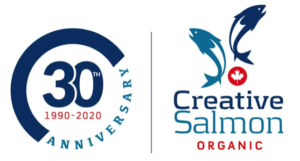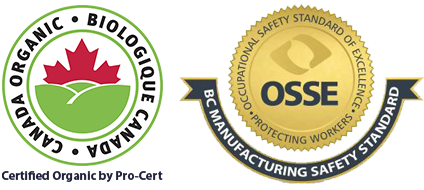
Dr. Emaline Montgomery, marine biologist and research scientist with DFO, collecting samples from the pens.
It’s been a year since a 12-week experiment saw sea cucumbers placed in pens at two Creative sites to explore the impacts of co-culturing giant red sea cucumbers alongside farm-raised fish, and the results are in!
Creative partnered with researchers at Canada’s Department of Fisheries and Oceans (DFO) and all involved were surprised and encouraged by the findings.
The study included pens that contained only fish, pens that contained only sea cucumbers, pens that had both fish and sea cucumbers, and pens with neither fish nor sea cucumbers.
The sea cucumbers housed with salmon did not significantly reduce the level of biofouling on the net pens, but the cucumbers did actively consume organic waste from the bottom of the pen.
Interestingly, sea cucumbers housed in empty pens – those without fish – did provide net cleaning services and reduced net-pen biofouling levels.

A wild sea cucumber beside plentiful hydroids.
“When the sea cucumbers were with the salmon, they sat at the bottom of the pens, hung out, and fed there,” says Dr. Emaline Montgomery, a marine biologist and research scientist with DFO. “But when they were alone, they crawled and fed everywhere, including the fouling on the nets.”
The study’s findings indicate that sea cucumbers could provide different benefits to salmon farmers depending on their use, and that co-culture pairing may help reduce organic nutrients generated by raising salmon.
“Sea cucumbers and salmon didn’t interact negatively with each other,” says Dr. Montgomery. “It is a really positive sign in terms of health and behaviour; they couldn’t care less about one another.”
Montgomery is hopeful for future exploration of sea cucumbers as an extractive species and looks forward to potential collaborations with Creative Salmon.

